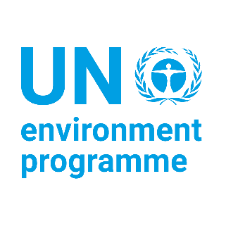Amid intensifying heatwaves and surging global demand for air conditioning, a new UN Environment Programme (UNEP) report warns that adopting sustainable cooling solutions could drastically cut greenhouse gas emissions, save trillions of dollars, and expand access to life-saving cooling for vulnerable populations.
The report, Global Cooling Watch 2025, launched today at COP30 in Belém, finds that global cooling demand could more than triple by 2050 if current trends continue. The rise is being driven by population and income growth, more frequent extreme heat events, and the spread of inefficient cooling technologies. Without urgent action, cooling-related emissions could nearly double 2022 levels, reaching an estimated 7.2 billion tons of CO₂ equivalent by 2050—despite improvements in energy efficiency and the phase-down of climate-warming refrigerants.
To avoid this trajectory, the report proposes a Sustainable Cooling Pathway, which would reduce emissions by 64 per cent (to 2.6 billion tons of CO₂e) compared with business as usual. Combined with rapid decarbonization of the global power sector, residual cooling emissions could fall by as much as 97 per cent.
“As deadly heatwaves become more regular and extreme, access to cooling must be treated as essential infrastructure alongside water, energy, and sanitation,” said Inger Andersen, UNEP Executive Director. “But we cannot air-condition our way out of the heat crisis. Passive, energy-efficient and nature-based solutions can help meet our growing cooling needs while keeping people, food chains, and economies safe.”
Cooling for All Without Heating the Planet
Developed by the UNEP-led Cool Coalition, Global Cooling Watch 2025 is the most comprehensive assessment to date of global cooling demand and its climate implications.
The proposed Sustainable Cooling Pathway envisions universal access to cooling—through space cooling, refrigeration, resilient buildings, and green urban spaces—without exacerbating global warming. It combines passive cooling design, low-energy and hybrid systems (such as fans and efficient air conditioners), high-efficiency equipment, and a faster phase-down of hydrofluorocarbon (HFC) refrigerants under the Kigali Amendment.
Nearly two-thirds of potential emissions reductions come from passive and low-energy solutions. The report emphasizes integrating these into national policies and urban planning to improve access for the three billion people who will need cooling by 2050. Adoption of the Pathway could save US$17 trillion in cumulative energy costs and avoid up to US$26 trillion in electricity grid investments through reduced demand.
‘Beat the Heat’ Campaign Gains Momentum
The report’s findings underpin the Mutirão Contra o Calor Extremo / Beat the Heat initiative—a joint effort by the Brazil COP30 Presidency and the UNEP Cool Coalition. The campaign aims to localize the Global Cooling Pledge and close policy, finance, and delivery gaps in urban heat resilience.
More than 185 cities—from Rio de Janeiro to Jakarta to Nairobi—along with 83 partner organizations have joined Beat the Heat, alongside 72 Global Cooling Pledge signatories.
“Beat the Heat is a true mutirão—people coming together to act on what they understand,” said Ambassador André Corrêa do Lago, COP30 President-Designate. “It raises awareness in an engaging way and unites people to make the effort needed to confront climate change.”

